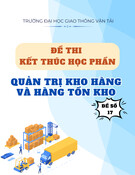
Int. J Sup. Chain. Mgt Vol. 8, No. 6, December 2019
803
IoT & Digital Twins Concept Integration Effects
on Supply Chain Strategy: Challenges and Effects
N.A. Simchenko, S.Y. Tsohla, P.P. Chyvatkin
1,2V.I. Vernadsky Crimean Federal University, Russian Federation.
3 Sochi state University Ave., Russian Federation.
1natalysimchenko@yandex.ru
2s.tsohla@yandex.ru
3lares@sochi.com
Abstract- IoT is set to revolutionize the supply
chain—both in terms of its operational efficiencies
and revenue opportunities—by making it
transparent. This paper is devoted to the investigation
of the challenges and effects of IoT and Digital Twins
integration. The goal is to ensure the formation of a
methodological basis for calculating the cumulative
effect of the accelerated implementation of digital
twins, which should become a source of reserved
growth and increase the competitiveness of a modern
industrial enterprise. Our study revealed that in the
context of the modern digital transformation of
industry, these concepts are mutually penetrating and
complementary for two reasons: 1) Big Data being the
basis of IoT implementation are not valuable in
themselves, since they are characterized by the lack of
systematization of huge data arrays presented in
different metrics. Big Data gain value in solving
specific business problems; 2) The digital
transformation of industry determines the shift in the
value of the assets of a company towards such a
specific asset as Digital Twins. In this regard, IoT
should be considered as one of the environments for
creating the most valuable asset of companies in a
digital economy - Digital Twins. From a
methodological point of view, the integration of these
concepts allows us to form several intermediate
digital standardization forms within the continuum
“standardization - technological breakthrough”.
Keywords- Digitalization of Industry, Internet of Things,
Supply Chain Management, Digital Shadow, Effects,
Challenges.
1. Introduction
The global supply chain management of the digital
economy shows that the latest high technologies,
such as the Internet of Things (IoT), Big Data
Analysis, Artificial Intelligence, Robotics,
Blockchain, significantly change the traditional
business models of corporate, regional and country
management. Technological innovations are
challenges for the leadership of modern companies,
which necessitates the development of a business
management strategy taking into account the
maximum use of social and economic benefits at
the regional, national and global levels. Strategies
for the digital transformation of companies, along
with IT modules and platform solutions, should
contain strategic tasks of network interaction
between structures in the context of production
sector digitalization. According to Deloitte
estimates, the global market for hyped Digital
Twins technologies using digital platforms will
grow up to $ 16 billion by 2023, while the turnover
of the Internet of things and machine learning
market should double by 2020. Current supply
chains will be reinvented as IoT-enabled systems
allow unprecedented end-to-end visibility, remote
tracking, and control [1]. According to the Internet
of Things Association, the growth rate of the
Internet of things will be 14-16% by 2024 [2]. In
connection with the rapid pace of digital
transformation of industrial production, it is
advisable to study methodological issues that relate
to the integration of the industrial Internet of things
(IoT) and the development of Digital Twins. The
purpose of this paper is to investigate the
challenges and effects of integrating the IoT and
the Digital Twins concepts. They consist of
ensuring the formation of a methodological basis
for calculating the cumulative effect of the
accelerated implementation of digital twins. It is a
source of reserved growth and competitiveness of a
modern industrial enterprise.
2. Methods
In the present day, the supply chain is not just a
way to keep track of your product, but also a way
to gain an edge on your competitors by building
your own brand. This paper is based on a
systematic methodology for studying the digital
transformation of modern industry based on the
integration of the Internet of Things (IoT) and
Digital Twins concepts. Using the smart-sourcing
method to study successful IoT implementation
cases allowed us to formulate challenges and
describe the effects of the integrated development
of the Internet of Things (IoT) and Digital Twins
concepts in ensuring the growth in profitability of
industrial corporations.
______________________________________________________________
International Journal of Supply Chain Management
IJSCM, ISSN: 2050-7399 (Online), 2051-3771 (Print)
Copyright © ExcelingTech Pub, UK (http://excelingtech.co.uk/)

Int. J Sup. Chain. Mgt Vol. 8, No. 6, December 2019
804
3. Results
Effective development of various markets and
industries in the digital economy is possible only
if there are developed platforms, technologies,
and trained personnel, institutional and
infrastructural environments. It helps to improve
the supply chain strategy and performance. The
most important technological basis for the
development of industrial digitalization is IoT.
The information society development strategy in
the Russian Federation for 2017-2030 approved by
Decree of the President of the Russian Federation
dated May 9, 2017 No. 203, has defined the
“Internet of Things” as a concept of a computer
network connecting things (physical objects) that
are equipped with built-in information technologies
for interaction with each other or with the external
environment without human intervention (human-
less interaction). In fact, IoT is a combination of
inter-machine communication networks and big
data storage / processing systems in which, by
connecting sensors and actuators to the network,
digitalization of various processes and objects is
implemented. Using the data obtained allows
optimising processes and objects based on new
algorithms, and feedback from actuators allows this
optimization to be implemented in practice without
significant costs. The introduction of IoT allows
costs to reduce and labour productivity to increase
virtually in any industry through the digitalization
of processes and facilities. The use of IoT in the
production industry is more focused on Big Data
analytics and is aimed at improving production
efficiency, operational reliability and productivity
throughout the supply chain [3, 4, 5]. To optimize
industrial production, it is necessary to make timely
decisions based on reliable information. This helps
the use of IoT features such as machine learning,
big data and automation technologies to create a
“system inside a system”. All these tools can
accurately and consistently isolate, receive, analyse
and transmit data to achieve greater efficiency,
reliable management and improved quality control
throughout any production chain. An example of
the application of this approach to industrial
production is the monitoring and maintenance of
industrial equipment. The Industrial Internet is the
main new technological mode of Industry 4.0
which is based on obtaining additional benefits
from combining technological equipment and
systems with information and communication
systems. A large layer of tasks associated with
industry relates to the logistics of materials,
equipment and personnel. Organization of the
effective movement of materials, equipment and
personnel within a production process can
significantly increase labour productivity and
reduce costs by analysing the incoming data and
controlling the full cycle of the production
process. Typically, various narrow-band IoT
wireless communication networks can be used for
such applications. If a production process is
localized within the territory of an enterprise, it is
possible to deploy a private narrow-band wireless
IoT communication network within the radio
frequency bands used in a simplified manner. If it
is necessary to arrange logistics and coordination
of actions on the territory of a city or a constituent
entity of the Russian Federation, it is necessary to
use narrow-band IoT wireless communication
networks with wide coverage and mobility in the
radio frequency bands used in a general manner.
An example of the industrial use of narrow-band
IoT wireless networks in geographically dispersed
infrastructures such as gas and oil pipelines is the
control of dampers, temperature and pressure
control, the detection of leaks, accumulations of
gases and fires. The IoT concept represents a set
of technologies for organizing the network
interaction between industrial / production
facilities connected to various applications,
platforms, information and management systems
at different levels. The goal is the mainly
automatic collection, processing and transmission
of information with the possibility of remote
monitoring and control without human
intervention, based on the scientific analysis of
the received data (with the tools of Data Science,
Big Data, Artificial Intelligence, machine/self-
learning) in near real-time mode. IoT uses sensor
readings for preventive equipment repair,
development and testing of its modifications,
online inventory and load monitoring of each
production unit. For example, the use of vibration
sensors in turbines of power plants and the
collection of relevant big data allowed General
Electric to save 35% for the maintenance of
turbines around the world and introduce
modifications to their design. Thus, the
accumulation of data on the operation of the same
type of equipment in various industries allows
creating analytical models of equipment
breakdown. The use of these models with the
results of real-time monitoring of a specific
equipment sample allows predicting a breakdown,
as well as quickly determining its cause and
eliminating it. In many cases, the features of the
production process allow connecting equipment

Int. J Sup. Chain. Mgt Vol. 8, No. 6, December 2019
805
only over wireless channels using certain radio
technologies [3-5]. The choice of radio
technology substantially depends on the mode of
collecting information. If it is necessary to receive
data every second with a high guarantee of delay
and quality, we must use communication
networks based on Nb-IoT / LTE-eMTC or shift
to high-speed cellular mobile networks (Order of
the Ministry of Communications of Russia dated
March 29, 2019 No. 113 “On approval of the
Concept for the construction and development of
narrow-band wireless networks of the Internet of
Things in the Russian Federation” No. 113 dated
March 29, 2019 - Access mode: https://digital.gov.
ru / ru / documents / (appeal date: 08/05/2019).). If
the transmission cycle and the amount of data are
less critical, it is possible to use the full range of
narrowband wireless IoT communication
networks. We draw attention to the results of
research by Russian scientists V.A. Krayushkin,
I.E. Leshikhina and M.A. Pirogova, who rightly
claim that the differences between IoT and the
stack of machine-manufacturing technologies are
insignificant, and we can talk about their
convergence [6- 9]. The standards and methods
for integrating industrial equipment, as well as the
rules for building information infrastructure,
differ from the IoT technology stack: the
numerical growth of the “real” component in IoT
relative to the “traditional” IT-stack of automated
production is much higher and will continue to
increase in the future. IoT will be distributed not
only in all areas of application but also in all
significant industries. Microsoft Corporation has
published the results of studies on the effects of
IoT implementation, which were obtained based
on a survey of 3000 top managers and IT
managers of leading corporations in the USA,
Great Britain, Germany, France, China, and
Japan. The IoT Signals report contains the
following data [6]:
- 30% of company revenue in two years will come
from IoT;
- 85% of respondents are ready to use IoT, of
which three quarters plan to deploy IoT projects;
- 88% of companies that are willing to use IoT
consider IoT to be critical to business success;
- The return on investment in two years will reach
30%, including due to cost savings and efficiency;
- Almost all IoT users (97%) have security
problems, which do not interfere with the
implementation of IoT.
It should be noted here that the IoT development
is important not only from a technological but,
above all, from organizational and managerial
points of view. Analysts at McKinsey, E. Lamarre
and B. May, in their recent study cite 10 trends in
the transformation of modern business based on
IoT [7]. Here are some of them that are basic for
the development of industry: 1) IoT is a business
opportunity, and not just a technical opportunity;
2) improving the efficiency of using IoT is
determined by specific business tasks; 3) IoT is
successfully used in heavy industry: in
mechanical engineering, automotive and discrete
manufacturing, power production, oil and gas and
mining industries to optimize production and
sales); 4) restriction of data access inhibits
business development. Mckinsey experts consider
two development scenarios are likely: companies
will be open to exchange data with original
equipment manufacturers (OEM); operators will
monitor data to differentiate productivity (for
example, mining trucks where operating
conditions vary widely); 5) the level of costs
determines the procedure for working with data.
We are talking about economic feasibility
calculations when choosing between a cloud
solution and your infrastructure for storing data;
6) cybercrime will not stop the development of
IoT, despite the growth of serious damage to
companies as a result of attacks and hacks [7].
Consider the above-mentioned IoT development
trends concerning the sources of growth in the
profitability of industrial companies. According to
American studies conducted on the basis of 146
companies using various business models,
digitalization significantly affects the growth of
company profitability [8]. According to the
majority of McKinsey experts surveyed, such
digital applications as remote monitoring,
predictive maintenance and equipment efficiency
most significantly affect the profitability of
companies in the field of engineering and
industrial automation (Fig.1).

Int. J Sup. Chain. Mgt Vol. 8, No. 6, December 2019
806
Figure1. The most important applications that impact on revenue of companies,%
Source: McKinsey Machinery & Industrial Automation survey [8]
Let us pay attention to the fact that in the presented
McKinsey results, the least significant factor affecting
the profitability of companies is Digital Twins (28%).
At the same time, we are impressed by the approach
of A. Auzan, who claims that digital twins are a
source of guaranteed reserved development and
growth of the company's competitiveness [10].
Taking into account the univariate approaches by the
McKinsey analysts and A. Auzan regarding the
prolonged effect of the digital twin action and their
high level of riskiness, we note the importance of
grounding the concept of Digital Twins on Big Data,
which are the subject of IoT research (Fig.2).
Figure2. The spectrum of assets in the digital economy [10]
Big Data is a collection of huge data arrays
unsystematized in different metrics that companies
need to work with. However, Big Data alone is not of
significant interest. They acquire value in solving
specific business problems. If Digital Shadow reflects
the dynamics of the present, then Digital Twins is the
asset of the future for a modern company. In this
regard, IoT should be considered as one of the
environments for creating the most valuable asset of
companies in the form of a digital company - Digital
Twins. According to one of the leading experts in the
implementation of digital twins C. Miskinis, the
combination of IoT with Digital Twins will lead to
the progressive development of a management system
based on the optimization of business processes [12].
Using Digital Threads, IoT devices can be modelled
using their platforms and the data necessary for
designing digital twins [11]. Therefore, IoT
development should not be linked solely to the
service industry. The important role of IoT processes
in the creation and management of digital twins [12].
The well-known Russian scientist-researcher A.
Borovkov emphasizes that the Digital Twins is a
driver technology, an integrator technology of basic
“end-to-end” digital technologies and most
subtechnologies, which development and application
can make the most significant contribution to the
creation of globally competitive new generation
products in the shortest possible time [13]. Digital
twins allow companies to create as soon as possible
globally competitive products of the new generation
[14]. However, for their development, along with new
approaches and methods, world-class multi-
disciplinary engineering competencies are required,
one of which is a specialized CML-Digital platform.
CML-Bench ™ is a system of activity management in
the field of digital design, mathematical modelling
and computer engineering (SPDM, Simulation
Process and Data Management system) [15]. We
highlight the following effects of integrating IoT and
Digital Twins concepts in terms of ensuring
profitability for companies:
- Digital Twins, as the company's most expensive
specific asset, provides “guaranteed reserved
development” [10] in the context of the digital
transformation in the sphere of material production;
- Ensuring technological superiority in the global
market of technologies and services;
- Creation of competent demand among industrial
companies to identify sub-technologies;

Int. J Sup. Chain. Mgt Vol. 8, No. 6, December 2019
807
- Reducing the number of various types of product
tests (technical, rating, operational, etc.).
Along with the effects of the IoT and Digital Twins
development, we highlight many serious challenges:
- Interoperability of data, lack of a single protocol for
the development of approaches to digital solutions in
the global market;
- Lack of a single digital platform and standard
architectonics;
- A high level of technical complexity that impedes
the deployment of IoT solutions;
- Landscape change for a business to enter the
services market;
- Lack of highly qualified engineering personnel;
- A high level of risk and high cost of creating Digital
Twins, as well as IoT projects. According to statistics,
almost a third of IoT projects fail at the stage of
concept verification, which is caused by the high cost
of implementation and the uncertainty of benefits;
- The absence in Russia of a library of case studies of
successful practices/business models of the cost-
effective introducing IoT and Digital Twins into
company activities;
- Development of standards and digital certification;
standardization of data exchange processes.
- Calculation of the economic effect from digital
solutions in the implementation of Digital Twins, etc.
4. Conclusions
The research identifies market drivers and restraints,
offers strategic recommendations, and forecasts IoT
revenues in the digital supply-chain management sector
until 2024. The research also lists a variety of use-case
scenarios across the various segments in supply-chain
management. In the course of our study devoted to the
prerequisites for the integration of the IoT and Digital
Twins provisions and concepts, we revealed that in the
context of the modern digital transformation of the
industry, these concepts are mutually penetrating and
complementary for two reasons: 1) Big Data, being at
the heart of the IoT implementation, are not valuable in
themselves, since they are characterized by
unsystematization of huge data arrays presented in
different metrics. Big Data gain value in solving
specific business problems; 2) The digital
transformation of industry determines the shift in value
in the company assets towards such a specific asset as
Digital Twins. In this regard, IoT should be considered
as one of the environments for creating the most
valuable company asset in a digital economy, Digital
Twins.
Formulation and consideration of the effects and
challenges due to the implementation of IoT and
Digital Twins allow us to conclude that
methodologically the integration of these concepts
allows generating many intermediate forms of digital
standardization in the “standardization - technological
breakthrough” continuum. Indeed, in the conditions of
fierce digital competition, a winner is not the one who
more fully and faster complies with the standards, but
the one who creates the Digital Twins faster.
Standardization is extremely important, but
standardization leads to a decrease in customization,
which leads to the risk of losing the opportunity for a
technological breakthrough.
Acknowledgement
The reported study was funded by RFBR according to
the research project No. 19-010-00346.
References
[1] Tech Trends: Beyond the Digital Frontier (2019).
- Available at:
https://www2.deloitte.com/content/dam/insights/
us/articles/Tech-Trends-
2019/DI_TechTrends2019.pdf [accessed Jul 26
2019]
[2] All-Russian Day of the Internet of Things:
Exchange of Experience and Exhibition of AIV
Members' Accomplishments [Electronic source].
- Access mode: https://iot.ru/aiv/vserossiyskiy-
den-interneta-veshchey-obmen-opytom-i-
vystavka-dostizheniy-chlenov-aiv (accessed:
08/06/2019).
[3] Sharma V., Choudhary G. Behavior and
vulnerability assessment of drones-enabled
industrial internet of things (IIoT ) // IEEE
ACCESS, Vol. 6 pp.43368-43383, 2018.
[4] Sklyar V., Kharchenko V. Challenges in
assurance case application for industrial IoT //
Proceedings of the 2017 IEEE 9th International
Conference on Intelligent Data Acquisition and
Advanced Computing Systems: Technology and
Applications, IDAACS, pp.736-739, 2017.
[5] Manyika J., Chui M., Bisson P. et al. Unlocking
the potential of the Internet of Things. Report
McKinsey Global Institute, June 2015 [Electronic
source]. - Available at:
http://www.mckinsey.com/business-
functions/business-technology/our-insights/the-
internet-of-things-the-value-of-digitizing-
thephysical-world (accessed: Aug 12 2019)
[6] IoT Signals. Summary of research learnings 2019
[Electronic source]. - Available at:
https://azure.microsoft.com/mediahandler/files/re
sourcefiles/iot-signals/IoT-Signals-Microsoft-
072019.pdf (accessed: Aug 06 2019).
[7] Lamarre E , May B. Ten trends shaping the
Internet of Things business landscape. McKinsey
Digital [Electronic source]. - Available at:
https://www.mckinsey.com/business-
functions/digital-mckinsey/our-insights/ten-
trends-shaping-the-internet-of-things-business-
landscape [accessed Jul 26 2019].
[8] Altmeier M., Bauer H., Becker M., Simon M.
Changing market dynamics - Capturing value in
machinery and industrial automation. McKinsey

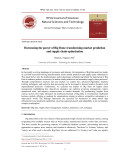


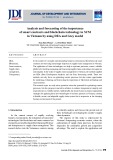
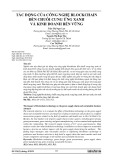

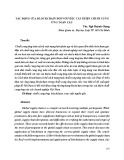

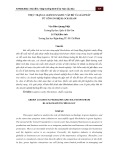
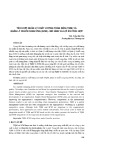

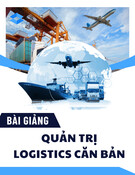
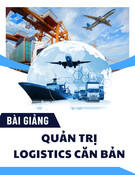
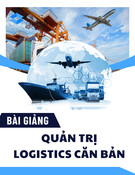
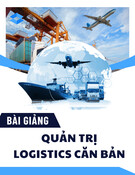
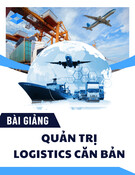

![Đề kiểm tra Quản trị logistics [mới nhất]](https://cdn.tailieu.vn/images/document/thumbnail/2025/20251015/2221002303@sv.ufm.edu.vn/135x160/35151760580355.jpg)
![Bộ câu hỏi thi vấn đáp Quản trị Logistics [năm hiện tại]](https://cdn.tailieu.vn/images/document/thumbnail/2025/20251014/baopn2005@gmail.com/135x160/40361760495274.jpg)


